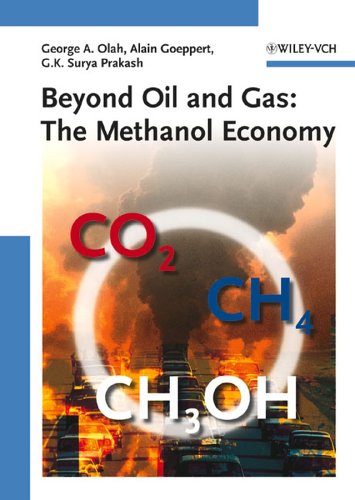

Most ebook files are in PDF format, so you can easily read them using various software such as Foxit Reader or directly on the Google Chrome browser.
Some ebook files are released by publishers in other formats such as .awz, .mobi, .epub, .fb2, etc. You may need to install specific software to read these formats on mobile/PC, such as Calibre.
Please read the tutorial at this link. https://ebooknice.com/page/post?id=faq
We offer FREE conversion to the popular formats you request; however, this may take some time. Therefore, right after payment, please email us, and we will try to provide the service as quickly as possible.
For some exceptional file formats or broken links (if any), please refrain from opening any disputes. Instead, email us first, and we will try to assist within a maximum of 6 hours.
EbookNice Team

Status:
Available0.0
0 reviews
ISBN-10 : 3527312757
ISBN-13 : 9783527312757
Author: George A. Olah, Alain Goeppert, G. K. Surya Prakash
In this masterpiece, the renowned chemistry Nobel Laureate, George A. Olah and his colleagues discuss in a clear and readily accessible manner the use of methanol as a viable alternative to our diminishing fossil fuel resources. They look at the pros and cons of our current main energy sources, namely oil and natural gas, and varied renewable energies, and new ways to overcome obstacles.
Following an introduction, Olah, Goeppert and Prakash look at the interrelation of fuels and energy, and at the extent of our non-renewable fossil fuel resources. Despite the diminishing reserve and global warming, the authors point out the continuing need for hydrocarbons and their products. They also discuss the envisioned hydrogen economy and its significant shortcomings. The main section then focuses on the methanol economy, including the conversion carbon dioxide from industrial exhausts (such as flue gases from fossil fuel burning power plants) and carbon dioxide contained in the atmoshere into convenient liquid methanol for fuel uses (notably in fuel cells) and as a raw material for hydrocarbons. The book is rounded off with a glimpse into the future.
Chapter 1: Introduction.
Chapter 2: Coal in the Industrial Revolution, and Beyond.
Chapter 3: History of Oil and Natural Gas.Oil Extraction and Exploration.Natural Gas.
Chapter 4: Fossil Fuel Resources and Uses.Coal.Oil.Tar Sands.Oil Shale.Natural Gas.
Chapter 5: Diminishing Oil and Gas Reserves.
Chapter 6: The Continuing Need for Hydrocarbons and their Products.Fractional Distillation.Thermal Cracking.
Chapter 7: Fossil Fuels and Climate Change.Mitigation.
Chapter 8: Renewable Energy Sources and Atomic Energy.
Chapter 9: The Hydrogen Economy and its Limitations.
Chapter 10: The "Methanol Economy": General Aspects.
Chapter 11: Methanol as a Fuel and Energy Carrier.
how is oil and gas transported
oil and gas transportation companies
oil pipeline transportation
gas pipeline transportation cost
gas pipeline transportation
Tags: Modeling, Oil Product, Gas Pipeline Transportation, George Olah, Alain Goeppert, Surya Prakash